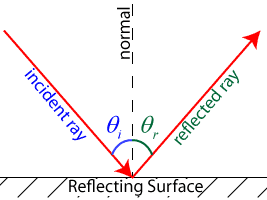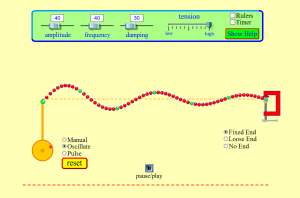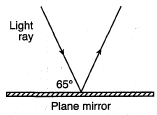
Tag Archives: waves
Waves on a String
Intro to Waves
Defining & Describing Waves

A pulse is a single disturbance which carries energy through a medium or through space. Imagine you and your friend holding opposite ends of a slinky. If you quickly move your arm up and down, a single pulse will travel down the slinky toward your friend.
If, instead, you generate several pulses at regular time intervals, you now have a wave carrying energy down the slinky. A wave, therefore is a repeated disturbance which carries energy. The mass of the slinky doesn’t move from end of the slinky to the other, but the energy it carries does.
When a pulse or wave reaches a hard boundary, it reflects off the boundary, and is inverted. If a pulse or wave reaches a soft, or flexible, boundary, it still reflects off the boundary, but does not invert.
Courtesy Penn State Schuylkill
Waves can be classified in several different waves. One type of wave, known as a mechanical wave, requires a medium (or material) through which to travel. Examples of mechanical waves include water waves, sound waves, slinky waves, and even seismic waves. Electromagnetic waves, on the other hand, do not require a medium in order to travel. Electromagnetic waves (or EM waves) are considered part of the Electromagnetic Spectrum. Examples of EM waves include light, radio waves, microwaves, and even X-rays.
Further, waves can be classified based upon their direction of vibration. Waves in which the "particles" of the wave vibrate in the same direction as the wave direction are known as longitudinal, or compressional, waves. Examples of longitudinal waves include sound waves and seismic P waves. Waves in which the particles of the wave vibrate perpendicular to the wave’s direction of motion are known as transverse waves. Examples of transverse waves include seismic S waves, electromagnetic waves, and even stadium waves (the "human" waves you see at a baseball or football game!).
Courtesy Penn State Schuylkill
Wave Anatomy

Waves have a number of characterisics which define their behavior. Looking at a transverse wave, we can identify specific locations on the wave. The highest points on the wave are known as crests. The lowest points on the wave are known as troughs. The amplitude of the wave, corresponding to the energy of the wave, is the distance from the baseline to a crest or the baseline to a trough.
The length of the wave, or wavelength, noted with the Greek letter lambda (![]() ), is the distance between corresponding points on consecutive waves (i.e. crest to crest or trough to trough). Points on the same wave with the same displacement from equilibrium moving in the same direction (such as a crest to a crest or a trough to a trough) are said to be in phase (phase difference is 0° or 360°). Points with opposite displacements from equilibrium (such as a crest to a trough) are said to be 180° out of phase.
), is the distance between corresponding points on consecutive waves (i.e. crest to crest or trough to trough). Points on the same wave with the same displacement from equilibrium moving in the same direction (such as a crest to a crest or a trough to a trough) are said to be in phase (phase difference is 0° or 360°). Points with opposite displacements from equilibrium (such as a crest to a trough) are said to be 180° out of phase.

Question: The diagram represents a periodic wave. Which point on the wave is in phase with point P?
Answer: Point C is in phase with point P, since point C represents a point with the same displacement from equilibrium moving in the same direction. Points that are in phase are located one or more whole wavelengths apart on a wave.
Question: Two waves having the same frequency and amplitude are traveling in the same medium. Maximum constructive interference occurs at points where the phase difference between the two superposed waves is:
Answer: 0°.

In similar fashion, longitudinal, or compressional, waves also have amplitude and wavelength. In the case of longitudinal waves, however, instead of crests and troughs, the longitudinal waves have areas of high density (compressions) and areas of low density (rarefactions), as shown in the representation of the particles of a sound wave. The wavelength, then, of a compressional wave is the distance between compressions, or the distance between rarefactions. Once again, the amplitude corresponds to the energy of the wave.
Question: A longitudinal wave moves to the right through a uniform medium, as shown below. Points A, B, C, D, and E represent the positions of particles of the medium. What is the direction of the motion of the particles at position C as the wave moves to the right?
Answer: The particles move to the left and right at position C, as the particles in a longitudinal wave vibrate parallel to the wave velocity:
Question: Between which two points on the wave could you measure a complete wavelength?
Answer: You could measure a complete wavelength between points A and C, since A and C represent the same point on successive waves.
iPod Speaker Project
Project Webpage: http://www.aplusphysics.com/projects/speakers.html
Event Description: Teams of two or three people will build an iPod speaker designed to provide optimal loudness, audio quality, and style. Projects will be evaluated based on performance (45 pts), write-up (45 pts), and aesthetics (10 pts). The design activity will last one week. The write-up will be in the format of a formal lab report.
Specifications:
- Provided materials are AWG 30 magnet wire, a 0.5” x 0.25” Neodymium magnet, and plastic cups.
- A mono audio jack (1/8”) is available in the classroom for testing.
- Additional materials are permitted. Procurement of any additional materials is the responsibility of the participants.
Procedural Guide:
- Your group should make a plan for evaluating speaker designs. Speaker performance will vary dramatically based on the materials chosen as well as the shape and construction of the cone and enclosure. A wise decision would be to plan for a variety of prototype designs to be constructed during the first phase so that they can be evaluated and a candidate group design chosen. It will be up to your design group to self organize and determine what approach to this competition you wish to take.
- Construct and optimize your final speaker configuration, making note of step-by-step procedural instructions and diagrams. Write up design report.
Resources:
- How Speakers Work: http://electronics.howstuffworks.com/speaker1.htm
- How to make a Speaker: http://www.josepino.com/?howto-speaker
- Plate Homemade Speaker Instructions: http://josepino.com/other_projects/?homemade-hifi-speaker.jpc
- More homemade speaker instructions: http://www.instructables.com/id/Homemade-speaker/
- Soda Bottle Speaker: http://physics.mercer.edu/marone/soda/sbsintro.htm
- Similar Speaker Project and Directions from EE Department at Southern Methodist University: http://lyle.smu.edu/ee/1382/Speaker%20Lab.doc
Design and Report:
Speakers will be evaluated based on their loudness, audio quality, and style. The accompanying web links are designed to help educate you on speaker design fundamentals and perhaps inspire you to come up with a particularly innovative design. You are welcome to use the instruments and tools in the classroom for construction and pre-testing of your speaker. The use of manufactured speakers or speaker components is not allowed.
Groups may consist of no more than three students. You must submit individually a formal lab report consistent with the formal lab report guidelines laid out in class. Report must be at least five pages in length and include sketches of your design as well as a discussion about the theory behind your design and any difficulties you may have encountered. Your entire lab report must be your own.
Scoring:
Reflection and Review
When a wave hits a boundary, three different events can occur. The wave may be:
- Reflected – wave bounces off a boundary
- Transmitted – wave is transmitted into the new medium
- Absorbed – energy of the wave is transferred into the boundary medium

The law of reflection states that the angle at which a wave strikes a reflective medium (the angle of incidence, or ![]() ) is equal to the angle at which a wave reflects off the medium (the angle of reflection, or
) is equal to the angle at which a wave reflects off the medium (the angle of reflection, or ![]() ). Put more simply,
). Put more simply, ![]() . In all cases, the angle of incidence and the angle of reflection are measured from a line perpendicular, or normal, to the reflecting surface.
. In all cases, the angle of incidence and the angle of reflection are measured from a line perpendicular, or normal, to the reflecting surface.
Although all waves can exhibit these behaviors, electromagnetic light waves are typically considered for demonstration purposes. When a wave bounces off a reflective surface, the nature of its reflection depends largely on the nature of the surface. Rough surfaces tend to reflect light in a variety of directions in a process known as diffuse reflection. Diffuse reflection is the type of reflection typically observed off of pieces of paper. Smooth surfaces tend to reflect light waves in a more regular fashion, such that the reflected rays maintain parallel reflected rays. This process is known as specular reflection, and is commonly observed in mirrors.
Question: The diagram represents a light ray reflecting from a plane mirror. Find the angle of reflection for the light ray.
Answer: The angle of reflection must be 25°, since the angle of incidence is 25° (note that angles are always measured from the normal!)
Review Problems
Key Points:
The velocity of a wave depends upon its medium.
The frequency of a wave determines its nature and remains constant from medium to medium.
























